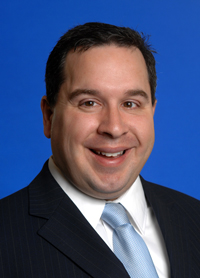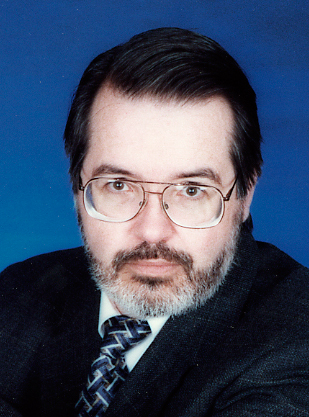As the media landscape continues to fracture, with traditional outlets shrinking and new digital-based platforms emerging, PR executives are challenged to adjust media strategies and resources to gain maximum media coverage.
Some key questions: Should PR go full-steam-ahead with digital/social media outreach while minimizing efforts toward “traditional media”? How can PR better monitor and respond to two-way conversations that occur with bloggers and other stakeholders?
In advance of the PR News Media Relations Forum, to be held Thursday, June 17, in Washington, D.C., PR News asked three members of its Advisory Board—Michael McDougall of Bausch & Lomb, Brand Ltd.’s Ned Barnett and Larry Parnell of George Washington University —to participate in a roundtable discussion on the top media relations trends, and how these trends can be best leveraged.
 |
| Michael McDougall |
â–¶ Michael McDougall is VP of corporate communications and public affairs at Bausch & Lomb. McDougall leads the global eye health company’s outreach to business, financial and healthcare media; government and community relations; and corporate social investing.
.jpg) |
| Larry Parnell |
â–¶ Larry Parnell is associate professor and master’s program director in PR at George Washington University. With 30-plus years of corporate, agency, public sector and academic experience, Parnell focuses on corporate and financial PR and CSR-related communications.
 |
| Ned Barnett |
â–¶ Ned Barnett is executive VP of marketing at Brand Ltd. With more than 35 years of experience in PR, Barnett has worked on communications strategies with some of the largest Fortune 500 corporations, as well as with nonprofit organizations. Much of his focus has involved helping launch new businesses and new products in competitive marketplaces, particularly in the technology space.
PR News: Can you identify the most important trends in media relations coming down in the last few years?
Ned Barnett: Well, there are fewer media people carrying a bigger load. On the one hand, they have less time for us, but they also have a greater need for us. If we can package information prepared as if it was coming from them, they’ll be more open to it because they don’t have the time to do it.
The other trend, of course, is new media. Ten years ago nobody heard of blogs. Now it’s a medium in itself. We treat them like media because key leaders treat them like media.
Larry Parnell: New media certainly is in the forefront these days. But I hesitate to talk about social media as something other than just a development, because of PR’s tendency to fall in love with a shiny new toy. That said, I think a trend that needs to be monitored carefully is the credibility of the media that your message appears in. On the one hand, sending a tweet or posting something on the blog has, in theory, direct impact in on a target audience. But it doesn’t have same credibility as a third-party article in the national media or other publications. We have to be careful not to fall in love with the easy way out.
Barnett: I agree with that, but to take it to the next step, in online media, as they are getting hard-pressed for staffing, they’ll take a press release that is written as if it were a story, and strip their name into it as byline and run it. In dealing with high-tech clients, almost every release will be repurposed as that third-party endorsement. It’s one of those dirty little secrets—but if you write the release right, it will take on the same credibility.
Michael McDougall: It’s not even using news releases. Our team been asked by media to author tweets for them. We’ll tweet as Bausch & Lomb, knowing we’ll be retweeted by certain trade media, using the same URL. In terms of other trends, there are two things:
One is the move toward media as entertainment. Unfortunately, it’s more and more about attracting the eyeballs to drive revenue in terms of self preservation. If the audience isn’t there, your job goes away. So there’s a push to focus on not only what’s newsworthy, but what will pique the interest of your readers in a way that’s a bit less separation of church and state than in the past. The second is the continued fracturing of media outlets. Just as blogs disrupted traditional publishing, microblogging is disrupting the blog universe.
PR News: Just what are the effects of blogs and Twitter on media outreach?
Barnett: The problem is that something viral can destroy you in a heartbeat. You can’t ignore them but you can’t treat them as legitimate media either, because they aren’t.
McDougall: I think it’s a question of what legitimate media is. The line there is really blurred. Take YouTube, for example. We’ll post a lot of material we want to get out to YouTube. What we don’t do is what some companies, like Kodak and British Airways, are doing: going direct to their customer base with executive videos. During this current British Airways strike, their CEO is narrating videos taken at Heathrow showing flights taking off and customers boarding—then putting them up on YouTube the same day. They are bypassing traditional networks to do it.
Parnell: With all this back and forth, the question is, are we accomplishing our goal by having these things posted or repurposed? I guess I’m being old school, but I find this discussion to be troubling, to tell you the truth. There are lots of shortcuts being taken, and we have to be careful not to rely on those exclusively.
PR News: How has the changing landscape affected PR staffing and budgeting?
McDougall: From a staffing perspective, if you’re not careful you can have the attention span of a squirrel—you’re constantly looking for what could be coming at you, and not looking at the opportunities that are out there. Generally, you need more doers, more folks on the team who can execute, and not just those that can speak—but those who can listen.
Parnell: I hear a lot a talk about how PR is growing as an area because more direct communication is taking place, and advertising as a means of messaging is diminishing. We cite Department of Labor statistics that PR and public affairs is one of the five biggest growing professions. It’s a growth industry, and it may be growing in nontraditional areas—digital and nonprofits—but it is growing.
Barnett: I’ve also noticed in how social networking is affecting the agency side. We’re adding kids—new graduates—to handle our social media networking because they’re comfortable with it. All they need some guidance on messaging and they can handle it. On the other hand, because everyone is doing it, it’s harder to make the case to clients that this is something that needs to be handled by professionals.
Parnell: Ned makes a good point. The premium now is on young people who are skilled in social media and digital, and in many cases clients will pay for that. The real challenge is what will happen to senior strategists who doesn’t have social media expertise? They are getting marginalized. I believe we still need them. PRN
CONTACT:
Ned Barnett, [email protected]; Michael McDougall, [email protected]; Larry Parnell, [email protected].
